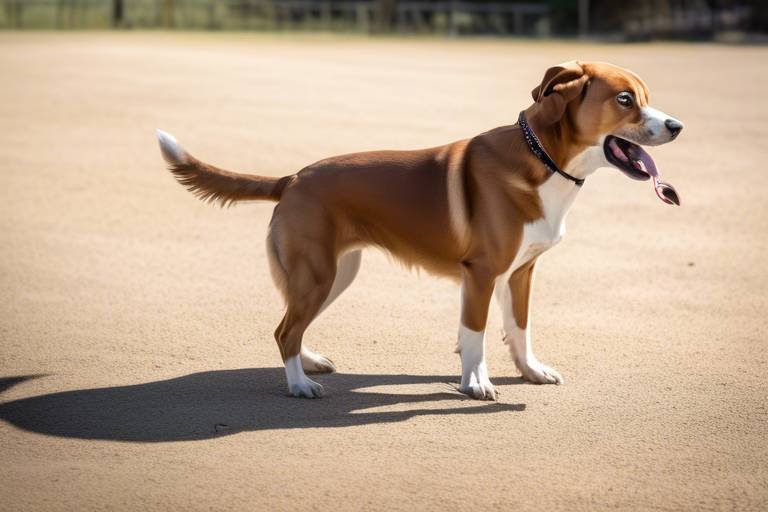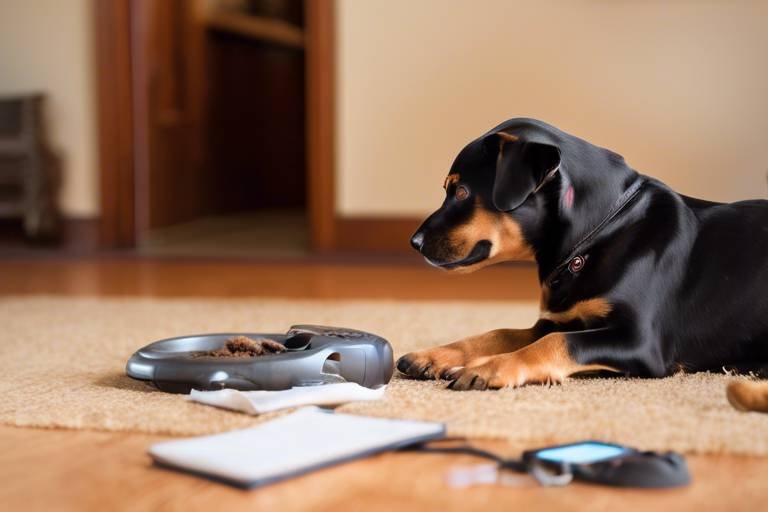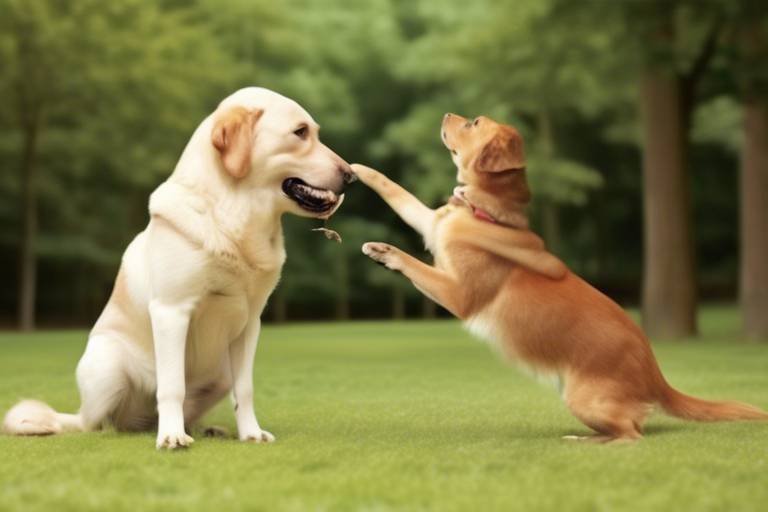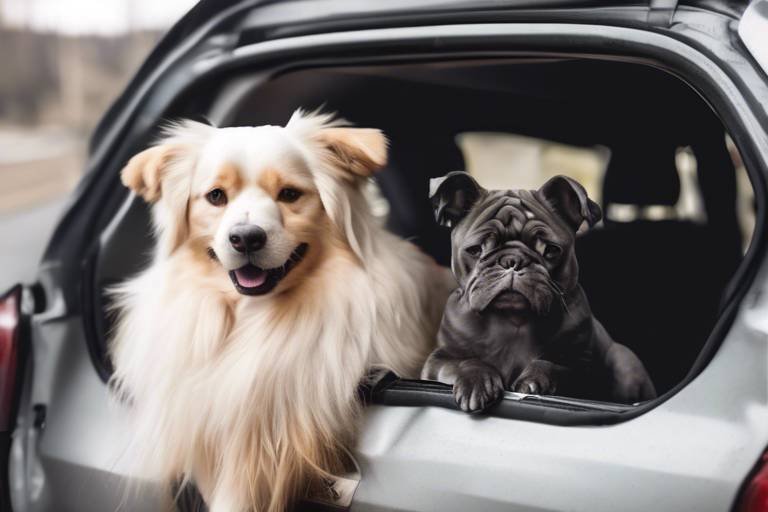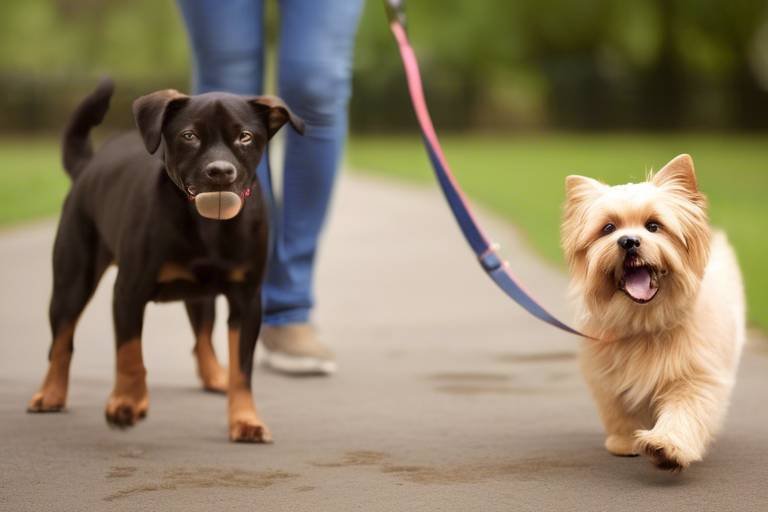How to Train Your Pet to Be Calm During Grooming
Grooming your pet is not just about keeping them looking good; it’s also an essential part of their health and well-being. However, many pets dread grooming sessions, leading to stress for both you and your furry friend. So, how can you turn this often chaotic experience into a calm and enjoyable one? In this article, we’ll explore effective techniques to help your pet remain calm during grooming sessions, ensuring a stress-free experience for both you and your furry friend.
Recognizing the signs of anxiety in pets is crucial for a successful grooming session. Pets can express their stress in various ways, such as whining, hiding, or even aggressive behavior. It’s like when you walk into a crowded room and feel the tension in the air; your pet can sense it too! Common behaviors indicating stress include:
- Trembling or shaking
- Excessive panting
- Attempting to escape or hide
- Growling or barking
Understanding these signs can help you adjust your approach and make grooming a more pleasant experience. Just like humans, pets can feel overwhelmed, and recognizing their discomfort is the first step in alleviating it.
A calm atmosphere can significantly influence your pet's behavior during grooming. Imagine trying to relax in a noisy, chaotic environment; it’s nearly impossible! Here are some tips to set up a soothing grooming space:
- Choose a quiet room away from distractions.
- Use soft lighting to create a relaxed ambiance.
- Play soothing music or nature sounds to calm your pet.
By creating a positive environment, you’ll be setting the stage for a more relaxed grooming session. Your pet will feel more at ease, making the entire process smoother.
The grooming tools you use can impact your pet's comfort level significantly. It's essential to select brushes and clippers that minimize discomfort during grooming. For instance, using a soft-bristled brush for sensitive areas can make a world of difference. Think of it as choosing the right shoes for a long walk; the right tools will make your pet feel much more comfortable.
Some grooming tools can be noisy, which may frighten pets. The sound of clippers, for example, can be alarming. To reduce noise, consider:
- Using quieter grooming tools designed for sensitive pets.
- Grooming your pet in a quiet area where loud noises are minimized.
- Gradually introducing the sounds of grooming tools to your pet.
By addressing sound considerations, you can create a more pleasant experience for your pet during grooming sessions.
Creating visual distractions can help keep your pet calm during grooming. Try using toys or treats to engage your pet’s attention while you groom them. It’s like when you’re at a doctor’s office, and they give you a toy to keep you occupied; it makes the experience less daunting! Consider placing a favorite toy nearby or using a treat-dispensing toy to keep their focus away from the grooming process.
Gradual exposure to grooming tools and processes can help reduce anxiety. Start by allowing your pet to explore the grooming tools without any pressure. Over time, introduce them to the grooming process in short sessions. This method is like getting used to a new routine; the more familiar they become with the tools, the more comfortable they will feel. Remember, patience is key!
Using rewards can encourage calm behavior during grooming sessions. Positive reinforcement not only makes grooming more enjoyable but also strengthens the bond between you and your pet. Here are some effective strategies:
- Offer treats immediately after a successful grooming session.
- Give plenty of praise and affection during and after grooming.
- Use a calm, soothing voice to reassure your pet.
By incorporating these techniques, you can transform grooming into a positive experience that your pet looks forward to!
Understanding when and how often to groom your pet is essential. Grooming too frequently can lead to anxiety, while infrequent grooming may cause discomfort. Establish a grooming schedule that suits your pet’s needs, considering their coat type and activity level. Just like maintaining a healthy routine for yourself, your pet will benefit from regular grooming sessions that are well-timed and consistent.
Sometimes, professional help is necessary. If your pet continues to show signs of anxiety despite your best efforts, consider seeking assistance from a professional groomer. They have the experience and tools to help your pet adapt to grooming. Think of it as calling in a specialist when you need expert advice; they can provide valuable insights and techniques to ease your pet's grooming anxiety.
Q: How can I tell if my pet is anxious during grooming?
A: Look for signs such as trembling, hiding, excessive barking, or attempts to escape. These behaviors indicate your pet is feeling stressed.
Q: What should I do if my pet becomes aggressive during grooming?
A: If your pet shows aggressive behavior, it’s best to stop the grooming session and consult a professional. They can help assess the situation and provide guidance.
Q: How often should I groom my pet?
A: The frequency of grooming depends on your pet’s coat type and lifestyle. Generally, regular grooming every few weeks is advisable for most pets.
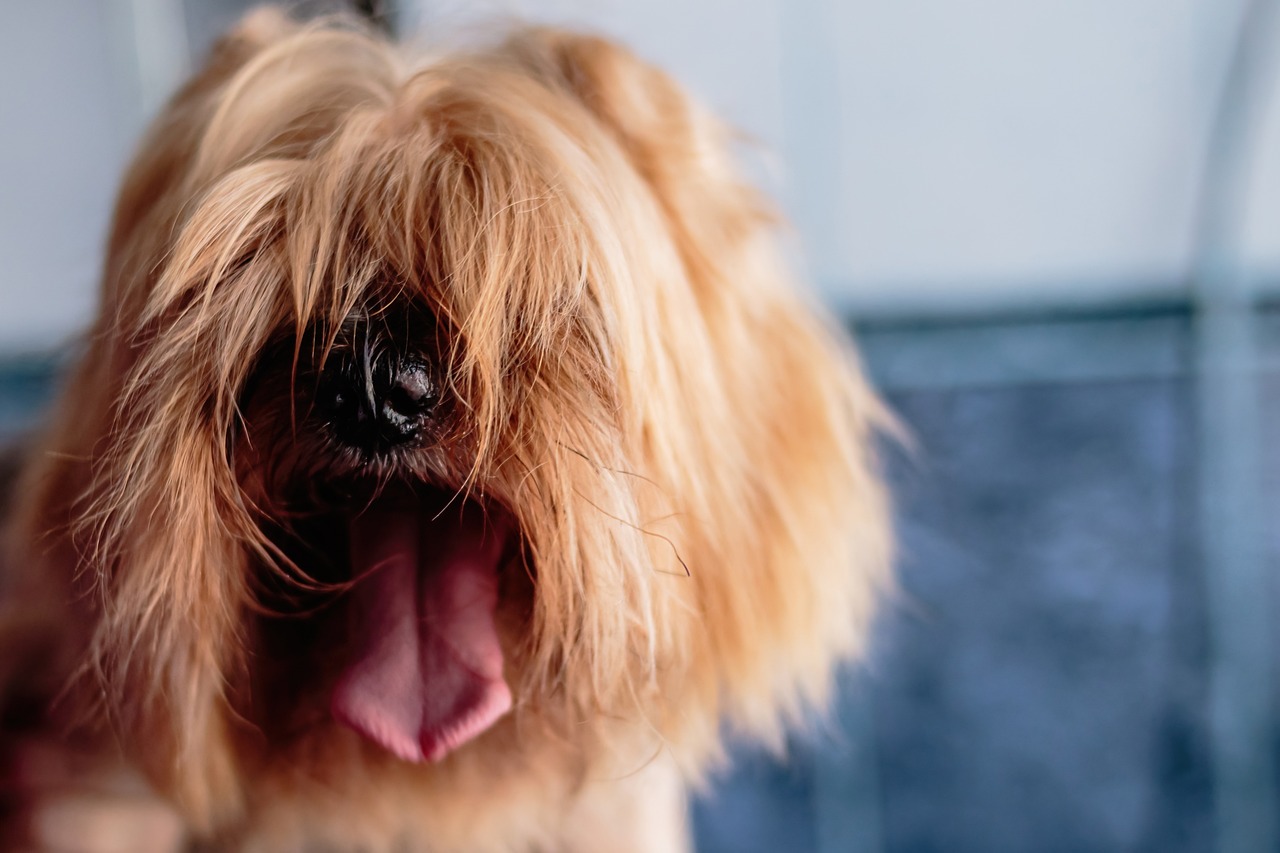
Understanding Pet Anxiety
Recognizing pet anxiety is the first step in ensuring a smooth grooming experience for your furry friend. Just like humans, pets can experience stress and anxiety, and it often manifests in ways that may not be immediately obvious. Understanding these signs is crucial for addressing the underlying issues and creating a calm grooming environment.
Common behaviors that indicate stress in pets include:
- Excessive barking or whining: This can be a clear sign that your pet is feeling overwhelmed.
- Hiding or attempting to escape: If your pet is trying to hide or get away from the grooming area, it may be feeling anxious.
- Shaking or trembling: Physical signs of fear can include shaking, which is often a response to anxiety.
- Loss of appetite: If your pet suddenly refuses to eat before grooming, it might be a sign of stress.
- Destructive behavior: Chewing or clawing at furniture can indicate that your pet is feeling anxious.
These behaviors can significantly impact the grooming process. For instance, a pet that is anxious may not sit still, making it difficult to brush or clip its fur. This can lead to a frustrating experience for both you and your pet. Additionally, if your pet associates grooming with fear or discomfort, it may resist future grooming sessions, leading to a cycle of anxiety and avoidance.
Understanding the root causes of your pet's anxiety is equally important. Factors such as past traumatic experiences, lack of socialization, or even certain breeds being predisposed to anxiety can play a role. For example, rescue dogs may have had negative experiences that make them more fearful of grooming tools or environments. By addressing these causes, you can help your pet feel more secure and comfortable.
In summary, being aware of the signs of anxiety and understanding your pet's unique triggers can pave the way for a more positive grooming experience. By taking proactive steps to alleviate anxiety, you can help your furry friend feel more at ease, making grooming sessions less of a chore and more of a bonding experience.
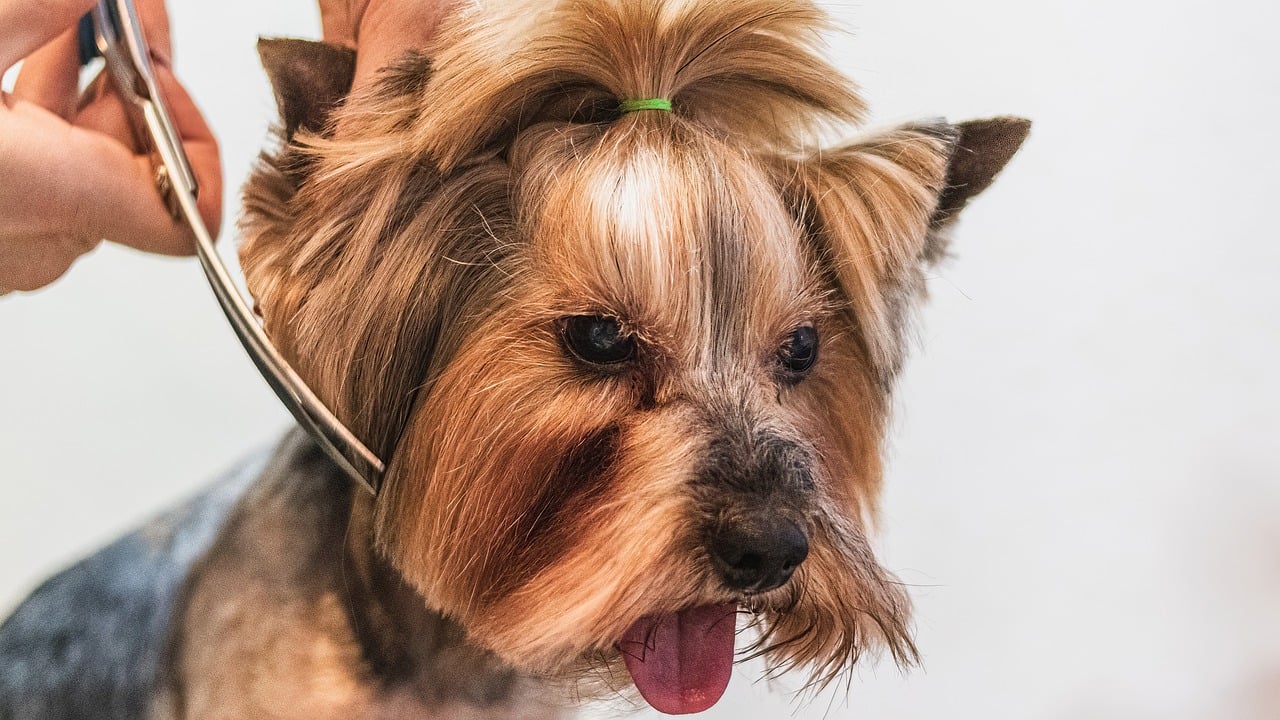
Creating a Positive Environment
When it comes to grooming your pet, creating a positive environment can make all the difference. Just like humans, pets can sense their surroundings, and a calm atmosphere can significantly influence their behavior. Imagine walking into a serene spa versus a chaotic gym; the ambiance sets the tone for the experience. So, how do you create that perfect grooming oasis for your furry friend? Let's dive into some effective strategies!
First and foremost, consider the location of your grooming sessions. Choose a quiet space in your home, away from the hustle and bustle of daily life. Ideally, this should be a place where your pet feels safe and comfortable. If your pet has a favorite spot, like a cozy corner or a sunny patch on the floor, that could be the perfect grooming station. You want to avoid distractions that might cause anxiety, such as loud noises or other pets vying for attention.
Next, think about the lighting. Natural light can be soothing, so if possible, groom your pet near a window. However, be mindful of harsh overhead lights that might create shadows or flickering effects, which can be unsettling for some animals. Soft, warm lighting can help create a welcoming atmosphere that encourages relaxation.
Another important factor is the temperature of the room. Make sure it's comfortable—not too hot or too cold. An environment that feels good will help your pet feel at ease. If it's chilly, consider using a blanket or a soft mat for your pet to sit on. This not only provides comfort but also creates a sense of security.
To further enhance the atmosphere, you might want to introduce some soothing sounds. Soft music or white noise can drown out any sudden, jarring sounds from outside, helping to calm your pet. There are even playlists designed specifically for pets, featuring gentle melodies that can ease anxiety. Just like a lullaby for a baby, these sounds can work wonders in creating a peaceful grooming experience.
Now, let’s not forget about visual distractions. Engaging your pet's attention can keep them calm during grooming. Consider placing their favorite toys nearby or using a treat-dispensing toy to keep them occupied. You could also hang a colorful, engaging poster on the wall to draw their gaze away from the grooming tools. The goal is to create a space that feels fun and inviting, rather than intimidating.
Finally, remember that your own energy plays a crucial role in setting the tone. Pets are incredibly intuitive and can pick up on their owner's emotions. If you approach grooming with a relaxed and positive attitude, your pet is more likely to mirror that behavior. Take a deep breath, smile, and speak to your pet in a calm voice. Your reassurance can be the anchor they need to feel secure during the grooming process.
In summary, creating a positive environment for grooming involves a combination of location, lighting, temperature, sound, visual distractions, and your own demeanor. By thoughtfully considering these elements, you can transform grooming from a stressful chore into a delightful bonding experience for both you and your pet.
Choosing the Right Tools
When it comes to grooming your pet, the tools you choose can make all the difference. Just like a chef needs the right knives to prepare a delicious meal, you need the right grooming tools to keep your furry friend looking and feeling their best. But how do you know what tools are best for your pet? It all starts with understanding their specific needs. For instance, a long-haired cat requires different grooming tools compared to a short-haired dog. The right brush can mean the difference between a pleasant grooming experience and a stressful one.
First off, consider the type of coat your pet has. If your pet has a thick, double coat, you might want to invest in a slicker brush and a de-shedding tool. These tools are designed to penetrate deep into the fur, effectively removing loose hair and preventing matting. On the other hand, if your pet has a short coat, a rubber brush or a bristle brush can be effective for removing dirt and loose hair while also providing a gentle massage that they’ll love.
Next, let’s talk about clippers. If your pet requires regular trimming, investing in a quality clipper is essential. Look for clippers that are quiet and have various blade sizes. This way, you can adjust the length of the cut based on your pet's needs. Remember, a clipper that is too loud can frighten your pet, making the grooming session a nightmare. Always check reviews and perhaps consult your veterinarian or a professional groomer for recommendations.
Here’s a quick overview of some essential grooming tools you should have in your arsenal:
| Tool | Best For | Key Features |
|---|---|---|
| Slicker Brush | Long-haired pets | Removes tangles, mats, and loose hair |
| De-shedding Tool | Thick-coated pets | Reduces shedding; prevents matting |
| Rubber Brush | Short-haired pets | Gentle massage; effective for loose hair |
| Clippers | All pets needing trims | Quiet operation; adjustable blade sizes |
Additionally, don’t forget about the importance of grooming gloves. These are fantastic for pets that are particularly anxious about traditional grooming tools. A grooming glove allows you to brush your pet while petting them, creating a calming effect that can ease their nerves. Plus, it’s a win-win situation, as it helps remove loose hair while you bond with your pet.
Ultimately, the right tools can make grooming a stress-free experience for both you and your pet. When you choose the right brushes, clippers, and accessories, you’re not just grooming; you’re creating a ritual of care and love. So, take your time, do your research, and invest in quality tools that will make grooming a breeze!
Sound Considerations
When it comes to grooming your pet, sound plays a crucial role in their comfort level. Many grooming tools, such as clippers and dryers, can produce loud noises that may startle or frighten your furry friend. Imagine being in a quiet room and suddenly hearing a loud vacuum cleaner; it’s enough to make anyone jump! Pets can have a similar reaction, which is why it’s essential to consider the sounds associated with grooming.
To create a more calm environment, try the following strategies:
- Choose Quieter Tools: Opt for grooming tools that are specifically designed to operate quietly. There are many brands that manufacture low-noise clippers and dryers, which can significantly reduce the stress your pet experiences.
- Introduce Sounds Gradually: Before the actual grooming session, let your pet hear the sound of the tools at a distance. This gradual exposure can help desensitize them to the noise, making it less intimidating.
- Use Soothing Background Music: Playing soft, calming music can drown out the harsh sounds of grooming tools. Not only does this create a pleasant atmosphere, but it can also help to soothe your pet's nerves.
Additionally, consider the timing of your grooming sessions. If your pet is naturally more anxious during certain times of the day, such as when the household is busy, try scheduling grooming during quieter moments. This way, your pet can feel more relaxed and less distracted by surrounding noises.
Another effective technique is to mask the sound of the grooming tools. You can do this by using a white noise machine or even a fan to create a consistent, gentle background noise. This can help to muffle the sounds of clippers and other equipment, making the grooming experience less jarring for your pet.
Lastly, always pay attention to your pet's body language. If they seem uncomfortable or anxious when a particular tool is in use, it might be time to reassess your approach. Remember, grooming should be a positive experience, and being mindful of sound can make all the difference in ensuring your pet remains calm and relaxed during their grooming sessions.
Visual Distractions
When it comes to grooming your pet, one of the most effective ways to keep them calm is by employing . Just like humans, pets can become easily distracted by their surroundings, so why not use that to your advantage? Imagine your furry friend sitting on the grooming table, eyes darting around, and suddenly, something catches their attention—a colorful toy, a moving object, or even a video playing nearby. This can significantly reduce their focus on the grooming process, making it a more pleasant experience for both of you.
There are several strategies you can implement to create effective visual distractions. For instance, consider placing a favorite toy or a new, interesting object nearby. Sometimes, something as simple as a bright, shiny ball can capture their attention and keep them occupied while you work. You might also want to try using a grooming mirror positioned in a way that reflects light or movement, enticing your pet to look at it instead of focusing on the grooming tools you’re using.
Another fun idea is to set up a mini obstacle course within their line of sight. This doesn’t have to be anything elaborate—just a few cushions or boxes that they can interact with while being groomed. The goal is to engage their curiosity, allowing them to momentarily forget about the grooming process. If you have multiple pets, you could also let them play together in a separate area while you groom the other, which can provide a natural distraction.
Additionally, consider using videos or images that are visually stimulating. For example, you could play a video of birds chirping or fish swimming. The movement on the screen can be a great way to draw their attention away from the grooming tools. Just make sure the volume is kept low, as loud noises can counteract the calming effect you’re trying to achieve.
In summary, integrating visual distractions into your grooming routine can transform a potentially stressful experience into a more enjoyable one. By capturing your pet's attention with engaging sights, you can help them feel more at ease and less focused on the grooming process itself. Remember, the ultimate goal is to create a calm and positive environment, making grooming a bonding experience rather than a battle.
- What types of visual distractions work best for pets?
Bright toys, mirrors, and engaging videos are excellent options. Just ensure they are safe and won't distract your pet too much from your grooming efforts.
- How can I tell if my pet is distracted enough?
If your pet seems more relaxed and less fidgety, that’s a good sign! You’ll notice they’re less focused on the grooming tools and more engaged with the distractions.
- Can visual distractions be used for all pets?
While most pets can benefit from visual distractions, each pet is unique. Pay attention to what specifically captures your pet's interest and adjust accordingly.
Desensitization Techniques
When it comes to grooming, many pets experience anxiety that can make the process challenging. One effective way to alleviate this anxiety is through . Think of desensitization as a gradual introduction, much like teaching a child to dive into a pool by first getting them comfortable with just dipping their toes in. The goal is to help your furry friend associate grooming with positive experiences, rather than fear or discomfort.
Start by introducing your pet to the grooming tools in a calm and controlled environment. Let them sniff and explore the tools without any pressure. You might find that your pet is curious about the brush or clippers, which is a great sign! Use treats to create a positive association. For instance, hold the brush in one hand and offer your pet their favorite treat with the other. This simple act can transform their perception of grooming tools from something intimidating to something exciting.
Next, gradually increase the level of exposure. Begin by gently brushing your pet for just a few seconds, then reward them immediately afterward. Over time, as they become more comfortable, you can extend the brushing duration. Always pay attention to your pet's body language; if they seem tense or anxious, take a step back. Remember, the key is to go at your pet's pace. You can create a desensitization schedule to keep track of your pet's progress:
| Session | Duration | Activity | Reward |
|---|---|---|---|
| 1 | 1 minute | Introduce brush | Favorite treat |
| 2 | 2 minutes | Gentle brushing | Praise and treats |
| 3 | 5 minutes | Brushing and combing | Treats and playtime |
| 4 | 10 minutes | Full grooming session | Extra treats and cuddles |
As you progress, consider incorporating sounds associated with grooming, like the buzzing of clippers. Start by playing the sound at a low volume while engaging in a fun activity with your pet. This way, they can hear the noise without feeling threatened. Gradually increase the volume over several sessions, pairing it with treats and affection to reinforce the notion that this sound is nothing to fear.
Visual distractions can also play a significant role in desensitization. While grooming, you can use toys or even a favorite TV show to keep your pet's attention focused elsewhere. This technique not only diverts their mind from the grooming process but also makes it an enjoyable experience overall. Remember, patience is crucial. Just like a fine wine, desensitization needs time to develop. Celebrate small victories along the way, and soon enough, your pet may look forward to grooming sessions!
- How long does desensitization take? - The duration varies by pet. Some may adapt quickly, while others may take weeks or even months. Consistency is key!
- Can I desensitize my pet to grooming tools on my own? - Absolutely! With patience and positive reinforcement, you can effectively desensitize your pet.
- What if my pet still seems anxious after desensitization? - If anxiety persists, consider consulting a professional groomer or a veterinarian for additional strategies.
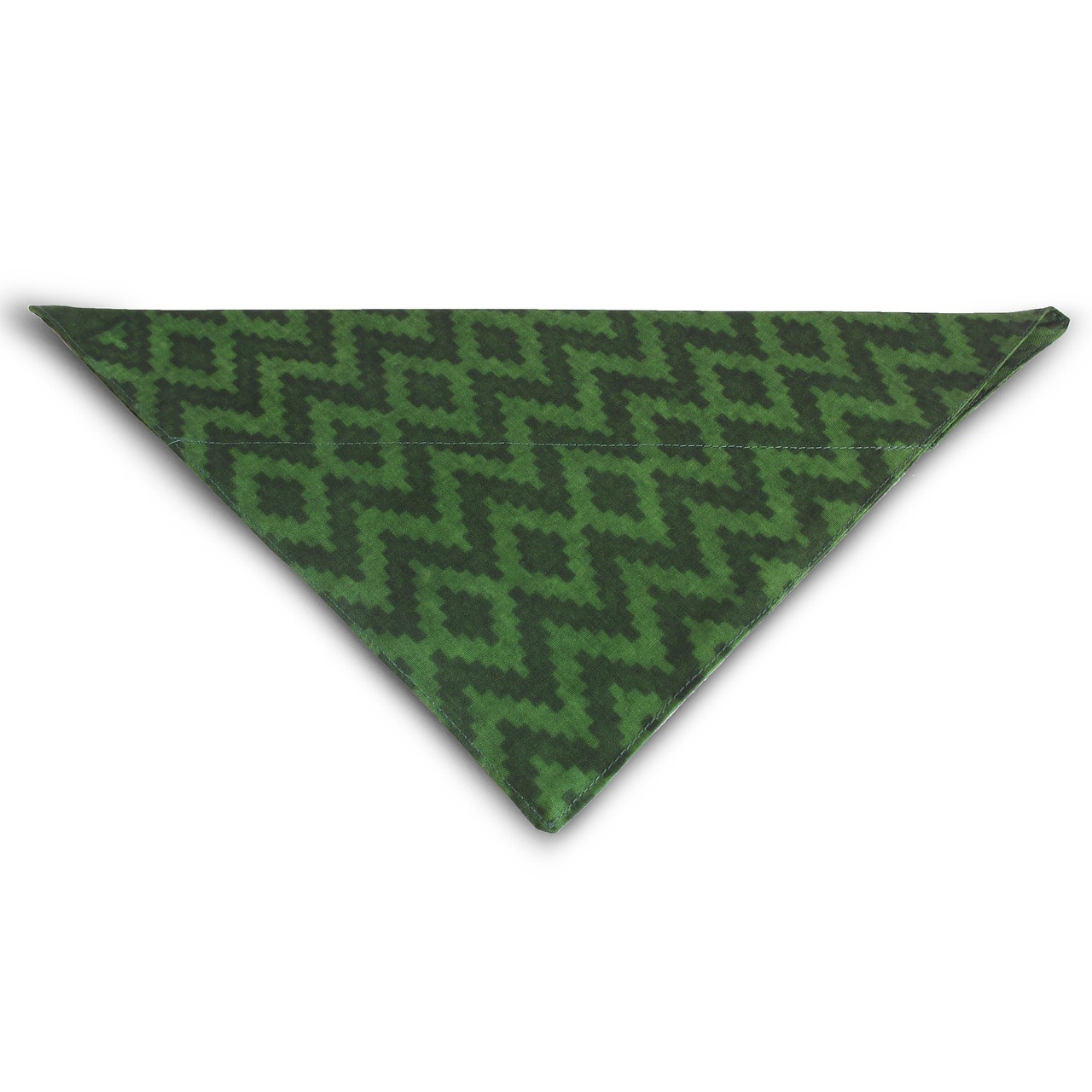
Positive Reinforcement Strategies
When it comes to grooming your pet, positive reinforcement is one of the most effective strategies you can employ. This approach not only helps your furry friend feel more comfortable but also makes the entire grooming process a lot more enjoyable for both of you. Imagine this: every time you brush your pet, you reward them with a treat or a gentle scratch behind the ears. Over time, your pet will start to associate grooming with positive experiences, making them less anxious and more cooperative.
So, how do you implement positive reinforcement effectively? Start by identifying what motivates your pet the most. For some, it might be their favorite treat, while for others, it could be a beloved toy or even your praise. Once you know what drives your pet, you can incorporate these rewards into your grooming sessions. For example, you could give a small treat every few minutes during grooming or offer a toy as a distraction when they start to feel uneasy.
Timing is crucial when using positive reinforcement. You want to reward your pet immediately after they exhibit calm behavior. This way, they can make the connection between being calm and receiving a reward. If your pet stays still while you brush their fur, give them a treat right then and there! This immediate feedback helps reinforce their good behavior.
Additionally, consistency is key. Make sure to use the same rewards and phrases every time you groom your pet. This consistency helps your furry friend understand what is expected of them and what they can anticipate in return. If you mix things up too much, it can lead to confusion and anxiety, which is the opposite of what you want to achieve.
To further enhance the effectiveness of positive reinforcement, consider incorporating a training schedule. Here’s a simple table to help you organize your grooming and training sessions:
| Day | Activity | Reward |
|---|---|---|
| Monday | Brushing | Favorite Treat |
| Wednesday | Nail Clipping | Praise and Playtime |
| Friday | Bath Time | Special Toy |
By following a structured approach, you can gradually desensitize your pet to grooming while reinforcing calm behavior. Remember, the goal is to create a positive association with grooming, so be patient and celebrate small victories along the way.
Lastly, don’t forget to involve your family in the process. Encourage everyone to participate in grooming sessions, rewarding your pet collectively. This not only strengthens your bond with your furry friend but also helps them feel more secure in the presence of multiple caregivers. After all, who doesn’t love a little extra attention?
- How long should I groom my pet each session? Aim for short sessions, ideally 10-15 minutes, especially when starting out. Gradually increase the duration as your pet becomes more comfortable.
- What if my pet doesn’t respond to treats? If treats aren’t motivating enough, try using verbal praise or favorite toys as rewards. Every pet is unique, so find what works best for yours!
- Can I use positive reinforcement for other training? Absolutely! Positive reinforcement is effective for various training aspects, from basic commands to more complex tricks.
Timing and Frequency
When it comes to grooming your pet, timing and frequency are key factors that can make a world of difference in how your furry friend reacts to the process. Think of grooming like a delicious meal; if you serve it too often or at the wrong time, it can lead to a bad experience. The same principle applies to your pet's grooming routine. So, how do you find that sweet spot? Well, let’s dive in!
First off, understanding your pet's specific needs is crucial. Different breeds have different grooming requirements. For instance, a long-haired breed, like a Maltese, might need grooming every few days to prevent matting, while a short-haired breed, like a Beagle, may only require grooming once every couple of weeks. Keeping this in mind will help you establish a routine that suits your pet's needs without overwhelming them.
Next, consider the timing of your grooming sessions. It’s important to choose a time when your pet is naturally calm. For many pets, this means grooming after a good play session or a long walk, as they are less likely to be hyperactive and more receptive to the process. You want to avoid grooming right after a meal or during times when they are usually restless, like the evening when they might be ready for bed.
Moreover, consistency is key. Establishing a regular grooming schedule not only helps your pet get used to the routine but also allows you to monitor their coat and skin health more effectively. Consider creating a grooming calendar that outlines when each grooming session will take place. Here’s a simple example:
| Day | Grooming Activity | Duration |
|---|---|---|
| Monday | Brushing | 15 minutes |
| Wednesday | Bathing | 30 minutes |
| Friday | Nail Clipping | 10 minutes |
This table can serve as a guideline, but feel free to adjust it based on your pet's specific needs and your schedule. Just remember, the goal is to keep the grooming sessions short and enjoyable. If your pet gets fidgety or anxious, take a break and return to it later. The last thing you want is for grooming to become a dreaded chore!
Lastly, don’t forget to incorporate positive reinforcement during grooming sessions. Whether it’s a treat, a scratch behind the ears, or a favorite toy, rewarding your pet for their calm behavior will help them associate grooming with positive experiences. Over time, they will learn to look forward to these sessions rather than dread them.
In summary, the right timing and frequency for grooming can make a significant difference in your pet's comfort level. By understanding their unique needs, establishing a consistent routine, and rewarding their good behavior, you can transform grooming from a stressful ordeal into a bonding experience that both you and your pet will enjoy!
Involving Professional Groomers
Sometimes, despite our best efforts, our furry friends may still struggle with grooming. This is where professional groomers come into play. They are trained to handle pets of all temperaments and can make the grooming process much smoother for both you and your pet. Think of a professional groomer as a pet whisperer—they have the skills and experience to calm even the most anxious animals. But how do you know when it's time to seek their help?
First and foremost, if your pet shows extreme signs of distress during grooming at home, such as excessive barking, biting, or trying to escape, it may be a good idea to consult a professional. Groomers are equipped with specialized tools and techniques that can help manage these behaviors. They often have a calming presence and can work with your pet to help them feel more secure. Plus, they know how to handle various breeds and their unique grooming needs.
When choosing a professional groomer, consider the following factors:
- Experience: Look for groomers who have experience with your pet's breed and temperament.
- Facility Environment: Visit the grooming facility to ensure it’s clean, safe, and welcoming.
- Reviews and Recommendations: Ask for recommendations from friends or check online reviews to gauge the groomer's reputation.
Involving a professional groomer can also be a great opportunity for your pet to become accustomed to the grooming process in a less stressful environment. Many groomers offer a “meet and greet” session where your pet can explore the space and get used to the sounds and smells without the pressure of an actual grooming session. This gradual introduction can significantly reduce anxiety.
Moreover, professional groomers often use positive reinforcement techniques, which can help your pet associate grooming with positive experiences. They might give treats, praise, or even playtime as rewards during and after the grooming process. This can be incredibly beneficial for pets who have had negative experiences in the past.
Ultimately, involving a professional groomer not only helps in maintaining your pet’s hygiene but also contributes to their overall well-being. It’s about creating a team effort between you, your pet, and the groomer to ensure a calm and enjoyable grooming experience. So, don’t hesitate to reach out for help—sometimes, a little extra support is all it takes to turn grooming from a dreaded chore into a manageable task.
Q: How often should I take my pet to a professional groomer?
A: It depends on the breed and coat type of your pet. Generally, dogs with longer hair may need grooming every 4-6 weeks, while short-haired breeds may only need grooming every few months.
Q: Can I stay with my pet during the grooming session?
A: Many groomers allow owners to stay, but sometimes, it’s better for anxious pets if the owner steps out. Discuss this with your groomer to find the best approach for your pet.
Q: What if my pet has had a bad experience with grooming in the past?
A: Inform your groomer about any past issues. They can tailor their approach to help your pet feel more comfortable and safe during the session.
Q: Are there specific grooming services I should consider?
A: Services can vary, but common options include bathing, nail trimming, ear cleaning, and haircuts. Discuss your pet’s specific needs with the groomer.
Frequently Asked Questions
- What signs indicate my pet is anxious during grooming?
Pets can show anxiety in various ways, such as excessive panting, whining, hiding, or trying to escape. Observing these behaviors is crucial to understanding your pet's comfort level during grooming sessions.
- How can I create a calming environment for grooming?
Setting up a soothing space can involve using soft lighting, calming music, and familiar scents. Make sure the area is free from distractions and has a non-slip surface to help your pet feel secure.
- What grooming tools are best for anxious pets?
Choosing the right tools is essential. Opt for soft-bristled brushes and quiet clippers to minimize discomfort. The right tools can make a significant difference in how your pet perceives grooming.
- How can I reduce noise during grooming?
To reduce noise, consider using quieter grooming tools or grooming in a space with soft furnishings that absorb sound. You could also play calming music to mask the noise of clippers or dryers.
- What are some effective desensitization techniques?
Gradual exposure is key! Start by introducing grooming tools without actually grooming. Let your pet sniff and explore the tools, and gradually progress to gentle touches before moving to actual grooming.
- How can positive reinforcement help during grooming?
Using treats and praise can significantly improve your pet's grooming experience. Rewarding calm behavior helps create positive associations with grooming, making it a more enjoyable process for both of you.
- How often should I groom my pet?
The frequency of grooming depends on your pet's breed and coat type. Generally, regular grooming every few weeks can help maintain a healthy coat and prevent matting, while also keeping your pet comfortable.
- When should I consider professional grooming assistance?
If your pet is extremely anxious or if grooming at home becomes too challenging, it may be time to seek professional help. Groomers are trained to handle anxious pets and can provide a safe, calming experience.



